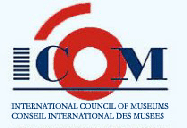 |
|
|||
|
REISERAPPORT
ICOM-CC’s newest working group, ATSR (Art Technological Source Research) 15th Triennial Meeting of ICOM-CC in New Delhi, India, September 22-26 The primary aim of ATSR is to provide a forum for the development and practice of work with documentary source research and the related reconstruction of materials and methods. To date, documentary sources have been a valuable source of information to those interested in the physical aspects of historical objects, but their study has often been undertaken without any focused methodology. The working group serves to join a network of scholars that will facilitate exchange and dissemination of information in order to bring about a higher standard of peer-reviewed work in this specialist field. As the title would imply, technological source research may cover any and all periods from which documentary sources survive. Thus, the group symposia are characterized by presentation of a wide range of topics and an innovative range of approaches, as well as by a very international membership roster. In between meetings, newsletters are circulated with information and announcements of interest to group members. Input from related specialists – art historians, science and technology historians and language scholars of all types – is highly valued. The positive response to the application for full status was in part due to the many activities that the group has engaged in. So far, two publications have been produced, with one currently in production, as a result of the published papers of the following symposia organised by the group: Amsterdam 2004, Madrid 2006, Glasgow 2008 (forthcoming). The next symposium is planned for 2010 in Vienna, which will be hosted by the Institute für Konservierung-Restaurierung of the Akademie der bildenden Künste. At the New Delhi conference, presentations were made by group members Mark Clarke of Antwerp, Louis Souza of Brazil and by the present author. The first two papers demonstrated the efficacy with which “non-traditional” documentary sources could be used to obtain information on artists’ materials. Clarke explored the possibilities for finding evidence for pigments in Anglo-Saxon England, a period for which no “traditional” documentary sources on the arts (such as treatises) survive. He showed that careful scrutiny of the contemporary literature (for example: riddles, travel accounts, medicinal texts) could reveal mention of a number of common colouring materials. Souza’s paper considered a period literally a world away – painting materials used in 19th century Brazil – via the records left by European naturalists, who commented on the materials native to the region. The paper presented by the present author concentrated on more conventional sources – painters’ guild ordinances and contracts – which have not been closely studied, in order to provide a more precise picture of the activities of ‘preparers’, specialised painters who served a specific niche in the 15th and 16th centuries in Europe. Highly skilled in the preparation of painting supports, gilding and polychromy, the preparer’s task was to allow the painter to focus on the “artistic” aspects of the painting of large altarpieces, or, to avoid quotidian tasks such as applying the ground to panels. Coincidentally, all three papers focused on painting materials, which has not been true of the subject matter covered in past symposia. Indeed, it is hoped that future working group projects will include joint ventures with other working groups. For more information on any of these publications, or on the group itself, please see: http://www.clericus.org/atsr/index.htm or, the new ICOM-CC website at: http://www.icomcc.org/21/working-groups/art-technological-source-research/ |
| ▲ til toppen Tilbake til reiserapporter 2008 |